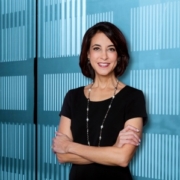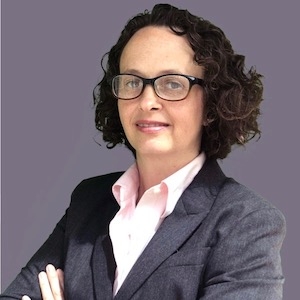Ada Lovelace Day: Our Top Five Women in Technology and Science

Ada Lovelace
By Elisabeth Grant (Washington, D.C.)
Why so few? Why so few women in science, technology, engineering, and mathematics? This is the question the American Association of University Women (AAUW) and the National Science Foundation (NSF) sought to answer in a joint report they recently conducted and released. The report addressed a myriad of factors that contribute to the low numbers of women in technology and science, from “beliefs about intelligence” to “workplace bias” (see the New York Times’ excellent analysis of the report in the article, “Bias Called Persistent Hurdle for Women in Sciences“).
In the Forward of the report, the AAUW explains that the study “focuses on practical ways that families, schools, and communities can create an environment of encouragement that can disrupt negative stereotypes about women’s capacity in these demanding fields.”
In an effort to support this, we present five extraordinary women in technology and science to encourage and promote the inclusion of women in these fields. There are, of course, so many more women that could be have been mentioned in this post, and please feel free to add their names to the comment section below.
- Ada Lovelace (or, Augusta Ada King, Countess of Lovelace) was the daughter of Lord Byron, born in 1815 and died in 1852.. She was a scientist and mathematician who is known as one of the first (if not the first) computer programmers for her work on Charles Babbage’s analytical engine. Today, Ada Lovelace Day is celebrated in her memory as “an international day of blogging (videologging, podcasting, comic drawing etc.!) to draw attention to the achievements of women in technology and science.”
- Marie Curie (1867-1934), the well known chemist and physicist who studied radioactivity and discovered polonium and radium, was awarded two Nobel Peace prizes (the first person to ever receive two). She paved the way for the cancer treatments we have today.
- Lillian Moller Gilbreth (1878-1972) was the first woman to be elected to the National Academy of Engineering. She was an industrial engineer and psychologist and is known for her “pioneering work in the fields of time and motion study, fatigue study, work simplification, scientific management, and ergonomics.” In addition to all this, she also raised 12 children.
- Grace Hopper (1906–1992) was not only a pioneer in the computer science field, but also in the military, where she obtained the rank of Rear Admiral in the United States Navy. She is known for her work in computer languages and her work led the way to developing COBOL, which is short for “COmmon Business-Oriented Language.” It’s also been said that she was the one who coined the term “debugging,” when she literally removed a bug (a moth to be specific) that was causing problems in a computer.
- Sally Ride ( 1951- ) earned a bachelor’s, master’s, and PhD in physics and went on to be the first American woman in space. After her time at NASA she left to teach as a physics professor at at the University of California, San Diego, act as director of the California Space Institute, and start her own company: Sally Ride Science.
In the process of writing this article, I spoke with Dr. Caroline Simard, vice president of research and executive programs at the Anita Borg Institute (ABI). Dr. Simard is a part of the research initiative Climbing the Technical Ladder: Obstacles and Solutions for Mid-Level Women in Technology and she believes it’s “extremely important to showcase the accomplishments of women” in technology fields both today and in the past.
For today’s list of notable women, Dr. Simard suggested Grace Hopper (who we included above), but she also pointed to Anita Borg, the founder of the institute Dr. Simard is now a part of. Dr. Simard explained that not only was Anita Borg talented and accomplished, she was also an advocate for women in the technology fields (See the news section of the ABI site for an upcoming series of profiles of women in technology). Dr. Simard explained that we must “dispel the myth” that women haven’t made major advancements in the field of technology.
But, even as we recognize these women from the past today, Dr. Simard cautions that we must “consider how far we’ve come, but not forget how far we have to go.” In her research, Dr. Simard has spoken to women who have been in the technology field for decades, and they note that in the past the obstacles for them in the workplace were overt (often they experienced what today would clearly be labeled harassment).
Today, blatant harassment in the office is diminished, but challenges still exist. These barriers for women are now less visible and come in the forms of “unconcious bias” and “subtle inequities,” issues that can be difficult to identify and even more difficult to address. Dr. Simard’s points are supported by the “Why So Few?” report referenced earlier. The New York Times article on the report included one example pulled from a “study of postdoctoral applicants” in which “women had to publish 3 more papers in prestigious journals, or 20 more in less-known publications, to be judged as productive as male applicants.”
While the women mentioned above broke down walls and showed they could excel in what are often considered male dominated fields, there is clearly much work to be done. Research done by organizations like the AAUW and ABI illuminates the bias lurking in the shadows. Remembering the women who came before may encourage the next generation of women to participate in technology and science tomorrow.








I would like to add Lucy Sanders